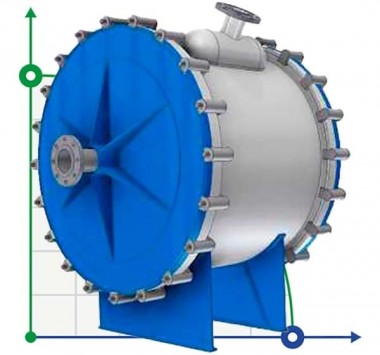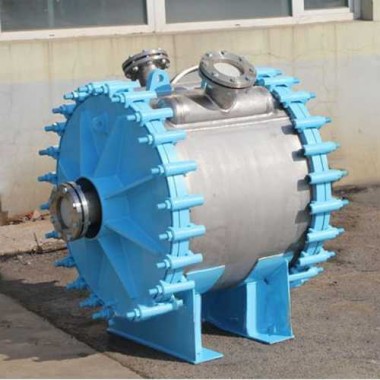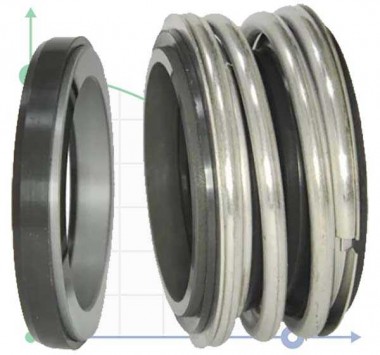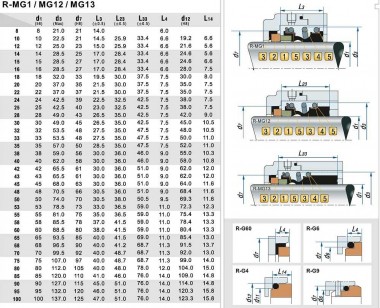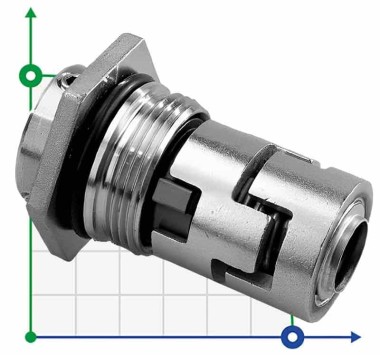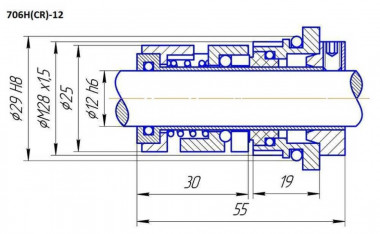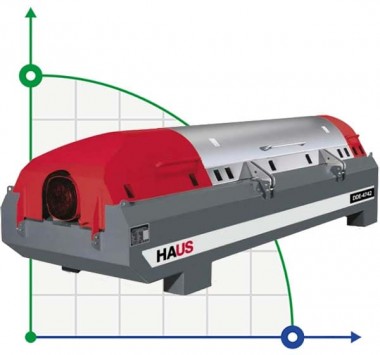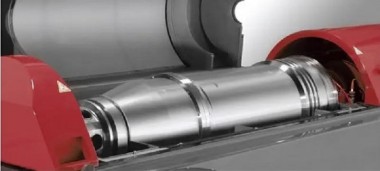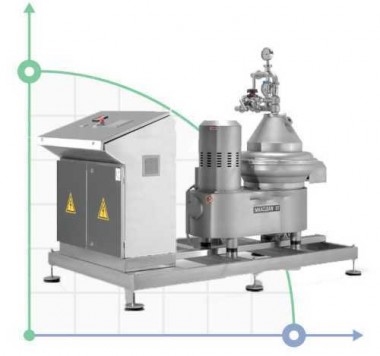POMAX Series · Pomace Oil Extraction Plant
Produced as byproduct in continuous system olive pressing plants, pomace contains nearly 8-12% and 2.5-3.5% oil in dry and wet pomace, respectively (for both 2-phase and 3-phase). HAUS has developed continuous system pomace plants (secondary pressing/extraction/repassing) for recovery of oil in the pomace. Can be considered in two ways as pressing with and without kernel. It consists of two sections as pomace preparation and processing. It is also supported by auxiliary units.:
Pomace Preparation Section
Consists of piston pump, malaxator and paste pumps. Kernel separator is also found in this section, in the plants where kernelless kneading is desired.
Pomace Processing Section
Comprises decanter and separator. Kernel separator is located downstream of the decanter in the plants where kernelled kneading is desired.
Auxiliary Units
Hot water boiler and exchanger ensures preparation of hot water required by the system and its transmission to the water line, piston pump ensures transfer of the pomace quantity required by the plant to the malaxator. Paste pump transfers the pomace rendered ready at the malaxator for pressing, to the decanter.
Extraction of 95% of the oil content in the olives is possible with HAUS Centrifuge Technologies continuous olive oil production and pomace oil production plants.
85-90% of the oil is extracted during the first pressing in the olive oil production process. When the
obtained pomace is processed again 40-45% of the oil is recovered in the second pressing.
In other
words:
When 1 ton of olives containing 20% oil is processed 176 kg of oil is obtained with an average
yield of 88%.
When the remaining pomace is processed 24x45/100 = 11 kg of pomace oil is obtained.
185-190 kg of oil is obtained from olives with a total oil content of 200 kg.
WORKING PRINCIPLE
In facilities requiring seedless kneading
Olive pomace obtained from olive squeezing facilities operating in continue system is transferred to the olive pomace seed separator through piston type pump to separate the seed. Two-phase olive pomace is enabled to be separated as seed and flesh. However, water is required for seed separation from three-phase olive pomace. Water addition is realized based on variable moisture levels. The seed separated is transferred to the storage place through spirals or fans. Olive pomace of which second extraction/squeeze will be realized is fed to the malaxator with the help of piston type pump or elevators. Malaxator unit prepares olive pomace of which seed has already been separated for squeezing. Thanks to the mixers in each part of malaxator, olive pomace paste is kneaded and prepared for squeezing (oil particles are gathered). There are hot water jackets separated for each part around the malaxator in order to heat the paste. Thanks to the pages with special aspects on the spiral, double-side kneading is realized. Paste pump consisted of spirals connected to rotor-stator mechanism has a speed control system of which cycle setting can be made electronically based on the olive pomace. Olive pomace prepared in malaxator is fed into decanter centrifuge with paste pump. Olive pomace oil and olive pomace are obtained by being separated into its phases with the impact of the centrifuge forces in decanter centrifuge. The oil is transferred to the vibrating secreen and then to the separator. It is separated from micron particles in the separator and the final product is obtained.
In facilities requiring seeded kneading
Olive pomace obtained from olive squeezing facilities operating in continue system is transferred into malaxator unit and prepared in the same conditions for squeezing. The process is the same from stage of separator to the stage of obtaining olive. However, because pulp which will be obtained from the decanter in this method will have seed within itself, seed separation is left after the stage of decanter.

Energy saving
Highly efficient motors and equipment are used.

Food Safety
All metal surfaces in contact with the product are made of stainless steel suitable for handling food products.

Control Screen
All equipment, status indicators and warnings are controlled by the touch screen having a simple and convenient interface.

Ergonomics
The facility is specially designed to provide a comfortable workplace for the operator and ease maneuvering equipment.

Security
The operator is provided with training by expert technical personnel, and information documents of all devices.

Economy and Convenience
Thanks to the modular HAUS juicing machines, production can be carried out at maximum performance in the smallest area and is easy to operate thanks to the control screen.
POMAX 53 (3 Phase)
| TECHNICAL SPECS | |
| INSTALLED MOTOR POWER | 88,18 kW |
POMAX PLUS 55 (3 Phase)
| TECHNICAL SPECS | |
| INSTALLED MOTOR POWER | 122,84 kW |
POMAX PLUS 64 (3 Phase)
| TECHNICAL SPECS | |
| INSTALLED MOTOR POWER | 182,54 kW |
POMAX PLUS 74 (3 Phase)
| TECHNICAL SPECS | |
| INSTALLED MOTOR POWER | 205,04 kW |







